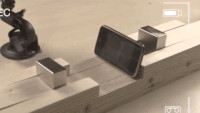Thank you everyone who responded to my question and tried to explain Ram speed/quantity. I tried my best to follow and I'm still lost due to the math not being basic lol
If only Ram math was like: 10x200=2000, 12x120= 1440, therefore 10x200>12x120
Oh, I misunderstood your question! I think I can explain using simple math! RAM math isn't much more complicated than that, you're just missing some of the numbers
Code:
RAM speed = (the number of RAM modules)x (how much data can the RAM move in a single chunk) x (the number of chunks it can transfer a second)
PS4 had 8 GB of RAM, but it used half-gig modules. That's 16 total modules.
Switch 2 has 12 GB of RAM, but it uses 6 GB modules. That's 2 modules.
Code:
PS4 RAM speed = (16) x (how much data can the RAM move in a single chunk) x (the number of chunks it can transfer a second)
Switch 2 speed = (2) x (how much data can the RAM move in a single chunk) x (the number of chunks it can transfer a second)
Those modules are connected to a bus that carries the data around in chunks. The wider the bus, the more data in each chunk. PS4 uses a pretty narrow 16 bit bus, Switch 2 uses a very wide 64 bit bus.
Code:
PS4 RAM speed = (16) x (16 bits) x (the number of chunks it can transfer a second)
Switch 2 speed = (2) x (64 bits) x (the number of chunks it can transfer a second)
A bit is the smallest unit of data possible - a one or a zero. There are 8 bits in a byte, because computer engineers hate us, and want us to be miserable. We can simplify our math a little though. Each RAM module, times the size of the bus, is how much total data the device can move at once.
Code:
16 bits = 2 bytes
2 bytes x 16 modules = 32 bytes,
PS4 RAM speed = (32 bytes) x (the number of chunks it can transfer a second)
64 bits = 8 bytes
8 bytes x 2 modules = 16 bytes a transfer
Switch 2 speed = (16 bytes) x (the number of chunks it can transfer a second)
So how many times, per second, can the RAM move this tiny little chunks over the bus? The RAM industry has developed multiple different kinds of RAM optimized for various situations. Switch 2 uses LPDDR - "low power double data rate" - a type optimized for power efficiency. PS4 used GDDR - "graphics double data rate" - a type optimized for speed, but extra expensive and power hungry.
In a twist, 10 years later, despite being "speed optimized", the Switch 2 RAM is faster. 7500 "mega transfers per second." Mega transfer meaning a million transfers, because all those zeros are annoying to write down. This is convenient for us, becuase we can multiply "mega transfers" times "bytes" to get "megabytes per second." The PS4 can do 5500 MT/s.
Code:
PS4 RAM speed = (32 bytes) x (5500 MT/s)
= 32 x 5500 MB/s
=176000 MB/s
= 176 GB/s
Switch 2 speed = ( 16 bytes) x (7500 MT/s)
= 16 x 7500 MB/s
= 120000 MB/
= 120 GB/s





